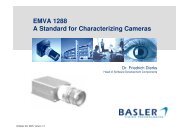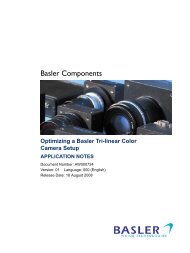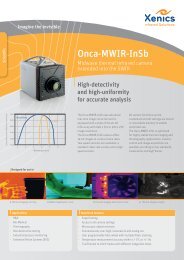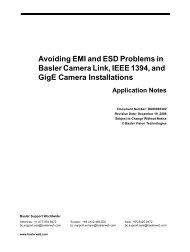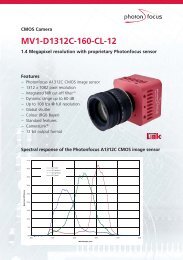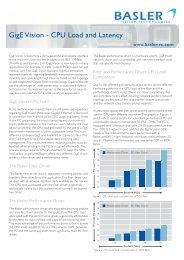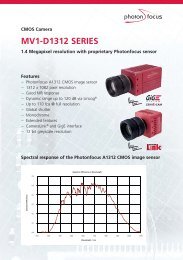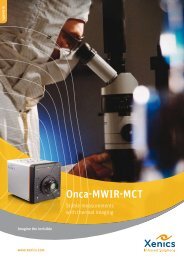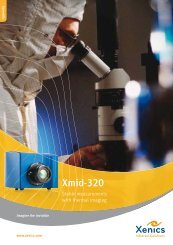User Manual MV1-D1312(I) CameraLink®Series - Machine Vision
User Manual MV1-D1312(I) CameraLink®Series - Machine Vision
User Manual MV1-D1312(I) CameraLink®Series - Machine Vision
Create successful ePaper yourself
Turn your PDF publications into a flip-book with our unique Google optimized e-Paper software.
4 Functionality300Typical LinLog2 Response Curve − Varying Parameter Time2Time1=850, Value1=19, Value2=18Output grey level (8 bit) [DN]25020015010050T2 = 950T2 = 960T2 = 970T2 = 980T2 = 9900Illumination IntensityFigure 4.14: Response curve for different LinLog settings in LinLog3 mode4.3 Test ImagesTest images are generated in the camera FPGA, independent of the image sensor. They can beused to check the transmission path from the camera to the frame grabber. Independent fromthe configured grey level resolution, every possible grey level appears the same number oftimes in a test image. Therefore, the histogram of the received image must be flat.A test image is a useful tool to find data transmission errors that are caused mostoften by a defective cable between camera and frame grabber.The analysis of the test images with a histogram tool gives the correct result atfull resolution only.4.3.1 RampDepending on the configured grey level resolution, the ramp test image outputs a constantpattern with increasing grey level from the left to the right side (see Fig. 4.15).4.3.2 LFSRThe LFSR (linear feedback shift register) test image outputs a constant pattern with apseudo-random grey level sequence containing every possible grey level that is repeated forevery row. The LFSR test pattern was chosen because it leads to a very high data toggling rate,which stresses the interface electronic and the cable connection.In the histogram you can see that the number of pixels of all grey values are the same.Please refer to application note [AN026] for the calculation and the values of the LFSR testimage.28



